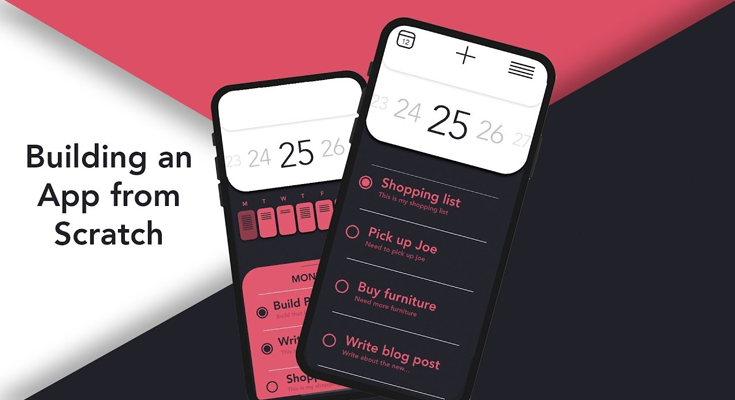Increasing the use of the mobile phone over a desktop is in the trend over the past few years. People have shifted their focus on building mobile apps as they help to engage more people. In today’s highly competitive environment, the company that focuses on engaging customers survives.
The work of building an app from scratch requires expertise and it is needed to ensure that the work is carried out by the help of a team of experts. You can make it yourself if you are good at it and the other way is to outsource it by giving the work to a mobile app developer or a company that does it.
There are several keynotes to take care of to make your project successful. A brief stepped down approach to it is presented as follows:
1. Objectives and Goals:
The first thing that you need to do is make sure of the list of things or goals your application is going to achieve. The idea should be concrete as the deletion of code later can cause huge losses.
In case you have a particular objective for your app clear then the question should arise in your mind that how the app is going to make it happen. Once it is properly defined, it becomes easier to proceed towards the much finer details.
2. Defining the scope:
The functionality of the app is discussed in this step, the initial features of the app are decided in this step. This can be done by engaging the team towards getting answers to the basic questions.
It includes questions like how the user guide sections that contain FAQs and chatbots are going to work, how will the products be displayed to the customers, how can a user share the information to other social media, how is it going to be productive to the user and so on.
3. Checking on Competitors:
The good thing is that you can check on the customer experience provided by the competitor apps, you can offer the user a better interface and experience in case you want to get your share in the market.
The thing is that you need to work hard analyzing the work of the competitors and make sure you do not lack any feature that they are providing.
4. Skeleton Wireframing:
The flow and navigation between various features of the application are laid down. It is generally a visual guide that helps define each of the goals and also helps in understanding the use cases.
5. Testing the Wireframe:
The verification of the flow is a must requirement. The thing is that a wireframe testing on time can cut the huge costs of rewriting of code. It helps the team to know whether the user will get any sort of hindrance in the experience in the currently accepted methodology.
6. Revision and Retesting:
Feedbacks are taken into account that is generated by the testers in the initial wireframe testing. After eliminating and making all the revisions suggested another testing is made to find glitches in the updated wireframing. It might lead to another round of revisions and testing until it finally satisfies the criteria.
7. Deciding the procedure for development:
The requirements of the application like the technologies to be used and the team to be prescribed, the platform to be used are all decided in this phase. It happens just before the actual development begins. This consideration largely depends on the skill sets of the team and the requirements of the product and the goals required to be achieved.
Sometimes, the budget for development decides the path taken for development. The apps built on native platforms are more secure and stable, but they cost much more than their hybrid counterparts.
Different methodologies and OS are required to make the app available to both the Apple store and the Google Play Store if they are made using a native framework, however, there are hybrid frameworks that can help develop the app for both using the same code. Hybrid frameworks are often avoided for good applications because they have their own limitations.
8. Starting the Development:
The actual how to build an app happens here, the display of the app is enhanced by using some template. The team of developers and designers both work together to build an app that achieves all the proposed goals. The most important part of it is the development of the home screen and navigation of the app so that it turned out to be user-friendly.
9. Testing of the app:
Learn mobile app development from scratch is the most crucial step in the development comes is testing. The app is not deployed for general users until it is tested completely. This testing happens in phases.
- Alpha Phase:
The functions are developed such that it can work out the minimum basic operations. Testing these help out in knowing how the app is going to perform. The functions are tested in this phase.
- Beta Phase:
The basic app is generated and is made available to a limited set of users. The app performs all of the operations but is currently contaminated with bugs and glitches. Most of them are removed in this phase by testing user acceptance and app usability through user data.
- Final Phase:
After the app is made available to all the users, testing is done to confirm that all the operations of the app work properly in all of the devices, this is done b collecting user data and detecting anonymous reports from users.
10. Launching the app and later upgradations:
The work of the development of the app does not end with launching the final product on the app stores. For your app to grab a market share it needs regular improvising and upgradations according to the requirements of the users.
At last, we hope that all this information helps you out in making a good application. Keep in mind what you have learned from this reading and start working from the first step. It is easier said than done, so keep in mind all the factors that are going to affect your project and make sure it goes as planned.



